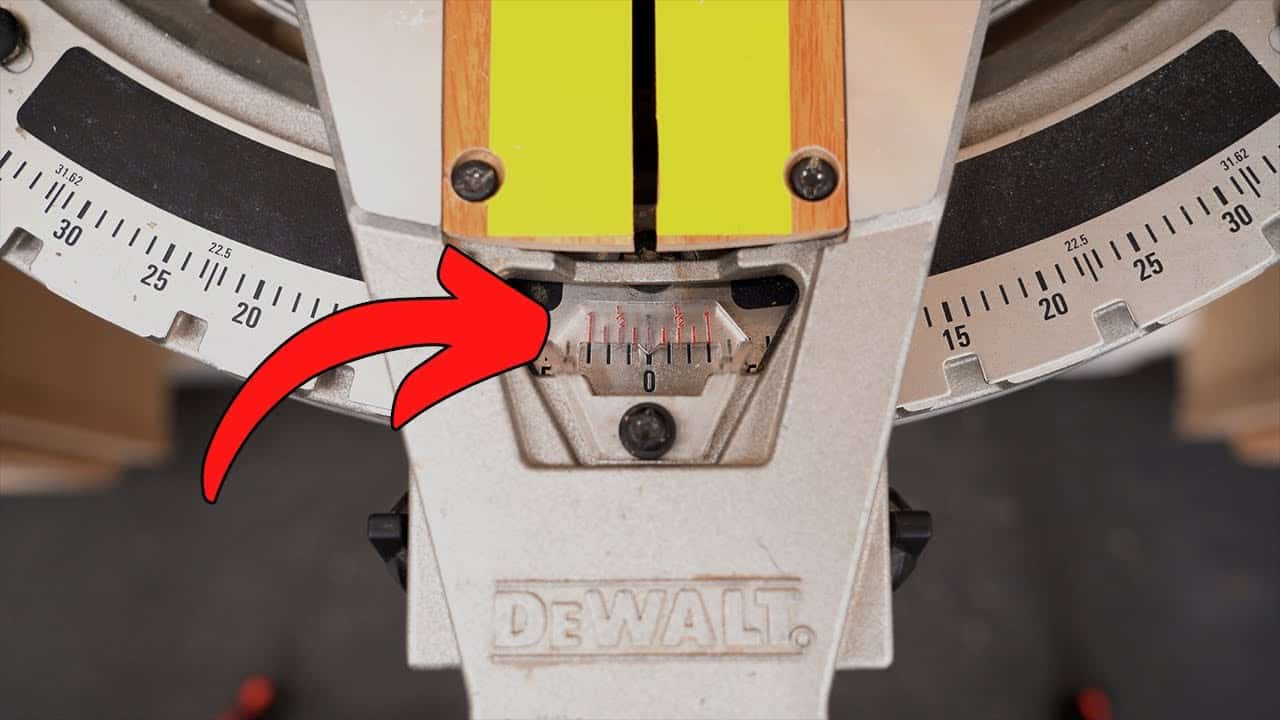Jodee from Inspire Woodcraft shared the woodworking tip featured in this video.
The video explains how the small secondary scale on many modern miter saws—the Vernier scale—lets users fine-tune the blade angle in small increments for more accurate cuts.
The demonstration shows how to read the Vernier scale and combine it with the main angle scale to achieve precise offsets left or right of whole-degree settings.
Watch the full video and subscribe to Inspire Woodcraft:
What the Vernier Scale Does
The Vernier scale provides fractional-degree control that the main miter scale alone does not offer. It effectively lets the operator nudge the blade in fine steps—useful when a whole-degree setting is close but not quite accurate.
Reading and Setting the Scale
With the main scale set to a whole degree (for example, the zero mark for a 90-degree cut), the Vernier center mark lines up with the main scale to indicate no offset.
To move the blade by small increments, line one of the Vernier marks up with the corresponding mark on the main scale, which signals a quarter-degree, half-degree, three-quarter-degree, or full-degree offset from the main setting.
The same approach works on either side of a whole-degree mark, so it is possible to dial in values like five and three-quarter degrees by matching the appropriate Vernier mark. Combining the main scale reading with the Vernier adjustment gives a quick, repeatable way to get angles between whole degrees without guessing or shimming.
When to Use It
The Vernier scale is most helpful when trim, joinery, or mating parts require slightly different angles than the saw’s whole-degree detents provide. It can save time and material by eliminating repeated test cuts when a fractional adjustment is needed for a tight fit.
It is also useful when setting up complex assemblies like moldings or multi-piece frames where small angle differences compound across joints. Using the Vernier makes those subtle corrections predictable and repeatable.
Tips for Accurate Cuts
Always make small test cuts and visually confirm the alignment before committing to the final pieces, as mechanical tolerances and play can affect results.
Keep the scales clean and the saw locked down when setting angles so the Vernier alignment does not shift during a cut.
Use the Vernier in combination with good layout and clamp practice: mark work clearly, support the workpiece firmly, and re-check the combined main-and-Vernier setting after any adjustment.
These habits help ensure the fractional-angle adjustments translate into accurate finished joints.
Why This Tip Matters
The Vernier scale turns a miter saw into a more precise layout tool without extra jigs or gadgets, letting woodworkers solve fit issues with small, controlled adjustments.
Learning to read and use the Vernier improves both efficiency and the fit of final assemblies.
Support Jodee by visiting his online store here: https://inspirewoodcraft.com/collections/all.
